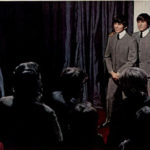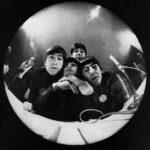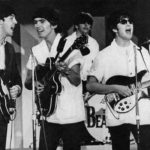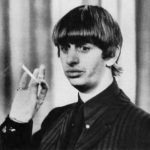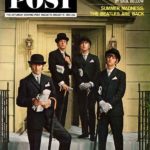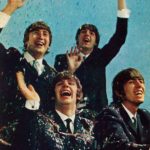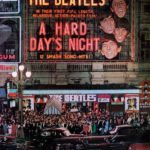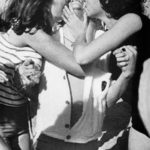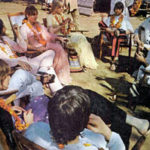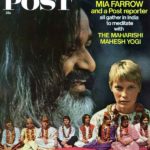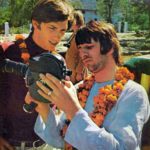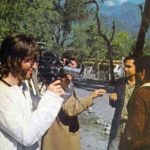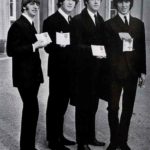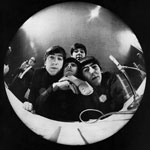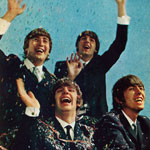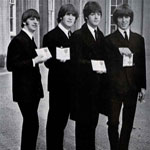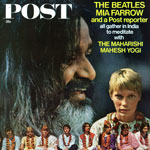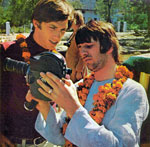Beatlemania
The Post was there when the Beatles first came into the public view. At the time we dismissed them as fad, but we quickly learned that their cheeky attitudes, unruly hairstyles, and catchy songs were a much bigger deal both at home in England and across the globe. Follow the Beatles on their rise to stardom with photos and articles from our archives. Don’t miss our special coverage on the 50th anniversary of the Beatles invasion in our Jan/Feb issue!
Yeah! Yeah! Yeah! Music’s Gold Bugs: The Beatles
By Alfred G. Aronowitz – March 21,1964
They can’t read music, their beat is corny and their voices are faint, but England’s shaggy-maned exports manage to flip wigs on two continents.
The Return of The Beatles
By Alfred G. Aronowitz – August 8, 1964
When the Beatles stepped from the plane, 1,500 people shrieked a welcome from the roof of the Liverpool Airport. The mobs kept breaking through the police lines to claw at their car, while the police motorcycles raced down both gutters, making spectators jump hotfootedly back onto the curbs. Along the way the motorcycle police heard radio reports that there was rioting at town hall. The Beatles–Ringo Starr, John Lennon, Paul McCartney, George Harrison–were home.
The Monarchs of the Beatle Empire
By James Morris – August 27, 1966
“Not many seers, I suspect, would have forecast in 1964, when the group first fell upon the United States, that in two years’ time they would still be at the very top of their slippery profession, still be inciting teenagers into peculiar paroxysms, still be raising wry smiles among the cops, the clergy, and the multitudinous rivals.”
There Once Was a Guru from Rishikesh, Part 1
By Lewis H. Lapham – May 4, 1968
Our reporter learns about Transcendental Meditation, makes a voyage to India and meets the Maharishi, the Beatles, a Beach Boy, and other notables in search of something.
There Once Was a Guru from Rishikesh, Part 2
By Lewis H. Lapham – May 18, 1968
Having voyaged to India and satisfied the Maharishi of his good vibrations, our reporter throws toast to a monkey, breathes incense with the students of meditation, listens with Mia Farrow to the scream of a wild peacock, and bestows a garland of flowers upon a Beatle.
Classic Covers: Music of the Sixties
The Beatles – photo by John Zimmerman
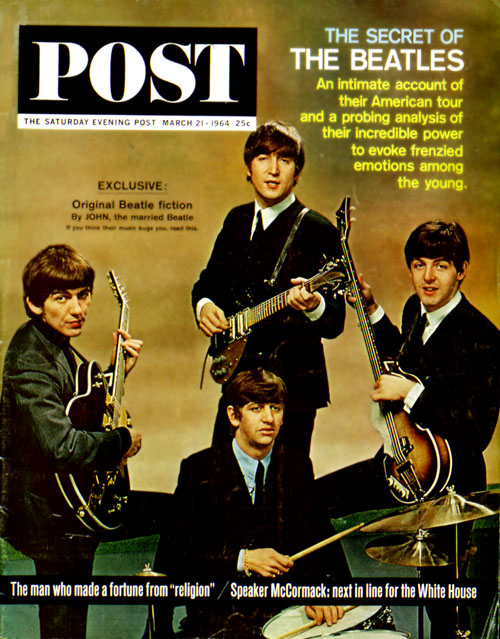
Photographer John Zimmerman was one of the best. His lens caught famous politicians and newsmakers, and even strange new groups from Britain. But this 1964 photo of the Fab Four is a classic. The cover promised “a probing analysis of their incredible power to evoke frenzied emotions among the young.” Yeah, Yeah, Yeah. What do you expect from stuffy old editors who worked Eight Days a Week? To simplify: the Beatles just made us feel Glad All Over. Okay, I’ll stop now.
Sonny and Cher – photo by Jerry Schatzberg
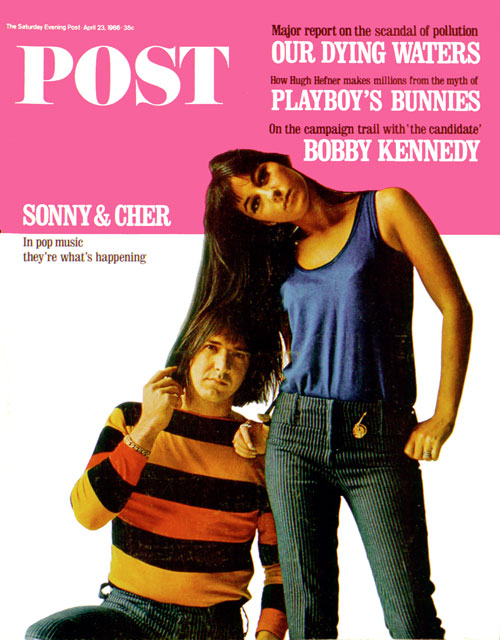
Another classic! Cher is looking hot and Sonny is looking, well, not the least bit Republican. Always up-to-date on the latest lingo, the editors informed us that Sonny and Cher were “what’s happening, baby”. Cher was known for her mod fashions, but here’s a description of Sonny backstage at the Hollywood Palladium: “Although the musicians were wearing tuxedos, Sonny had on a yellow turtleneck sweater, a white, double-breasted pirates’ jacket with wide lapels, epaulets and yellow puffs for buttons. His trousers were white, tight, and ornamented with a wide, silver-buckled, brown-leather belt, and black boots completed the outfit.” You can’t get more hip than that. That description, by the way, was from the author of the article, Peter Bogdanovich.
Roger Miller – photo by Maurie Rosen
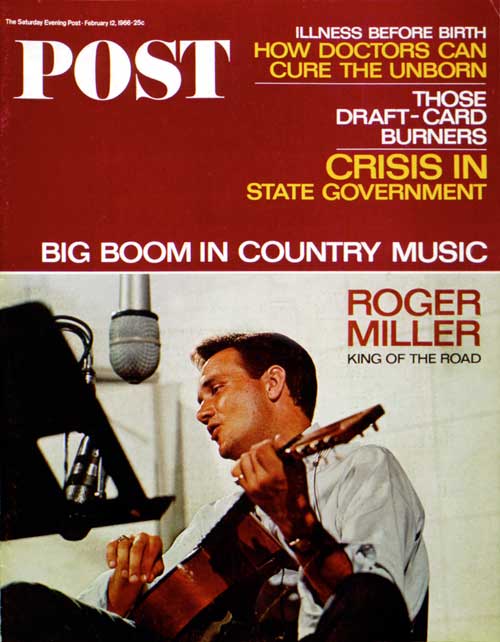
It wasn’t just rock and roll. There was a “big boom in country music”. Anybody over fifty remembers the “King of the Road”. From “Engine Engine No. 9” to wishing you had a “Do Wacka Do” (okay, you had to be there), Roger Miller was big time. What is country music? “It’s soul in a rhinestone suit”, the article said, “honesty with amplifiers, a new ‘uptown’ sound that city folks like—and it’s back in the big time again.” Remember “A White Sport Coat” by Marty Robbins? The Carter Family? Sonny James? This was “that new sound from Nashville”. But no one could do “You Can’t Roller Skate in a Buffalo Herd” like Roger Miller.
The Mamas and the Papas – photo by Dan Wynn
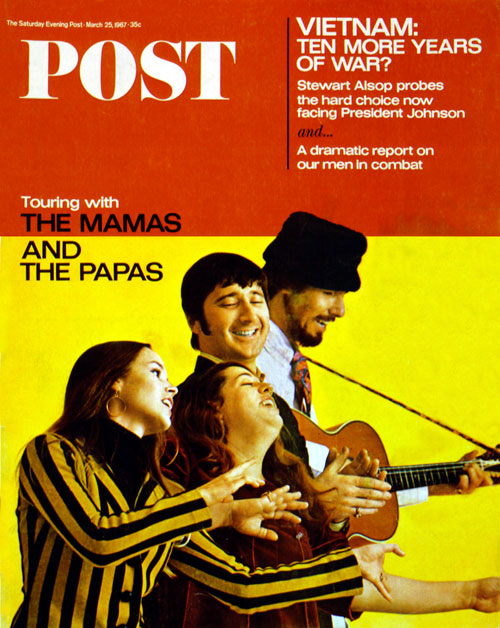
“Monday, Monday,” “Calfornia Dreamin’,” “I Saw Her Again” – the hits just kept coming for the Mamas and the Papas, proving they weren’t just hippies – they were hippies with talent. But they were on the wild side. A guy in one audience stood up and shouted, “Cass, Cass, I love you.” Cass “peered into the audience from the footlights. ‘Dynamite! Where are you staying?’” The article by William Kloman stated that once “the Mamas and the Papas instigated a riot, mainly to test their theory that it could be done scientifically. John got a black eye for his efforts, and they have since tried to keep their audiences under control.” Mama Cass (whose voice on “Dream a Little Dream of Me” I will always remember) died of a heart attack in 1974, John passed away in 2001 and Denny in 2007. Happily, lovely Michelle is still with us.
Frank and Nancy Sinatra – Supremes photo
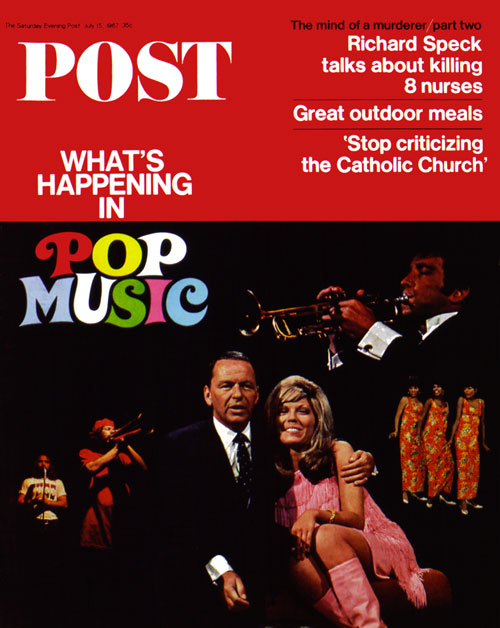
“It has been 15 years now since rock ‘n roll was laughed off as just another fad,” the Alfred G. Aronowitz article states. “Frank Sinatra called it ‘the martial music of every sideburned deliquent on the face of the earth.’ The police in Atlanta, Ga., ruled that teen-agers couldn’t dance to it without written parental consent. Roman Catholic leaders in Boston called for a boycott of it, to be enforced by a censor. And the head of the White Citizens Coucil in Alabama saw it as part of a Negro plot to ‘mongrelize America.’” Welcome to the 60’s, folks. The diversity in music was a sign of the jumbled times: Herb Alpert, The Supremes, The Byrds, Simon and Garfunkel, Petula Clark. 27-year-old Nancy Sinatra, “has already collected three gold singles, which is two more than Frank Sinatra ever got in his entire 26-year career.” And then Frank and his little girl have a smash love duet, “Something Stupid.” Something Crazy was going on.
Bob Dylan – photo by Elliott Landy
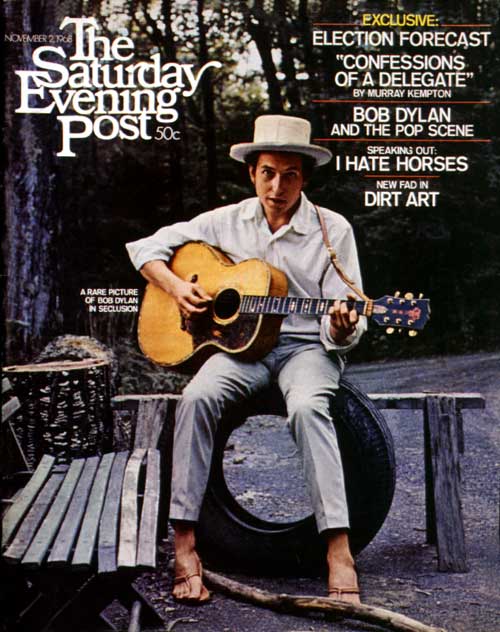
Okay, I confess: once, hearing a guy on a radio program dedicate a Bob Dylan song to our troops, my response was “haven’t they suffered enough?” Not a fan of the voice – sorry. This 1968 article covered “the royal family” of pop. From Hendrix to Buck Owens, Joplin to Merle Haggard, B.B. King to the Beach Boys. And oh yes, the Stones, Simon & Garfunkel and Johnny Cash. Then, “Enter the King, Bob Dylan”. Author Alfred G. Aronowitz makes Dylan’s lyrics sound almost biblical, “….the mysterious Ballad of Frankie Lee and Judas Priest” he says, is “a parable of friendship and temptation.” And “the moral of one of his songs, he recites, is that no man should be where he does not belong, that each man should help his neighbor, that no one should envy his neighbor’s lot.” But I can’t argue about the unending beauty of “Blowin’ in the Wind,” which became something of a civil rights anthem. Indeed, how many roads must a man walk down…
